List of Authors
>>About this blog
Recent blog post
|
[O'age]
May 28, 2017 09:00
"Regishi Island Strategies and Water Marks" (2-32-1, Shinkawa, Chuo-ku)
tide level was defined as the average tide level in Tokyo Bay (1884), and was used as a standard for zero altitudes. The altitude of the "Japan Standard", which was established in Nagata-cho, Chiyoda-ku in 1891, was determined by surveying from the intersection. At present, the standard tide center has been replaced by an oil pot tide center in Sagami Bay, but it is an important historical site in the history of modern surveying technology in Japan.
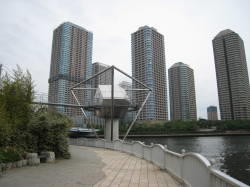 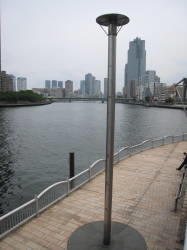
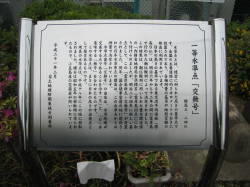 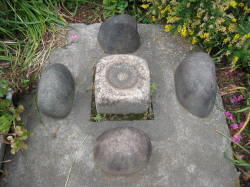
Tour of Japan Standard Field (Chiyoda-ku)
June 3 was one of the events related to the survey day (the survey method was promulgated on June 3, 1949), Japan's standard point and open to the public. I can't usually see the door closed, but I've seen it for the first time. It was a very interesting event lecture.
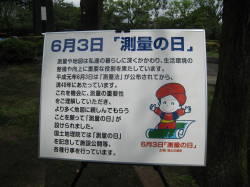 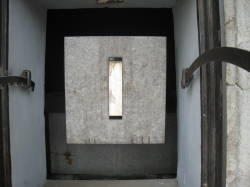
In the early Meiji era, a British-style benchmark was set up, and a method similar to an immortal character was carved into immortal objects, and heights were surveyed. In Western Europe, we heard that there were many cobblestones, and instead of digging holes on the road surface to set a benchmark, they carved symbols on the wall and set equipment on the horizontal line (nogroove). Since then, the surveying method has changed in Japan, and punctuality standards have been no longer used, and since then, it seems that the number of remaining non-textual notations has decreased due to disasters, war disasters, or burials. In Chuo-ku, the standard sign is clearly present at the bottom of the "Ichiishibashi Lost Shirase Stone Mark". (The role as a benchmark has been completed.)
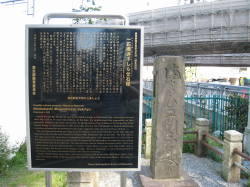 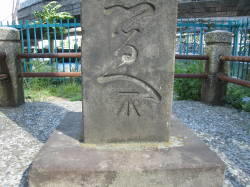
In addition, the related "Japan History Origin" is located in Minato-ku. This is also an important starting point.
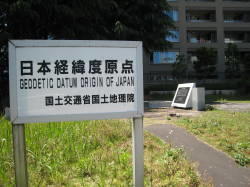 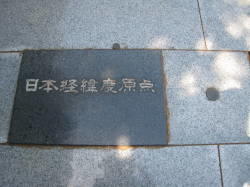
[Slow of Satsuki's Koi]
May 25, 2017 18:00
When Minato Park was picked up last time, the stairs and slopes were still under construction, but the slope has now been completed and you can go to the Sumida River Terrace. This time, from Minato Park, we went out to the Sumida River Terrace, crossed the Kamejima River Sluice Gate and Minami Takahashi, and crossed the Rei Kishijima Teshio Station, Chuo-ohashi Bridge, Eitai Bridge, and Toyomi Bridge.
Features are under the modern Chuo-ohashi Bridge and the historic Eitai Bridge.
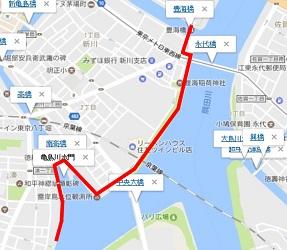 <<<<<<<< >>>>> <<<<<<<< >>>>>

<<<<<<<<<<<<<<<< Get off this slope and go to the Sumida River Terrace >>>>>
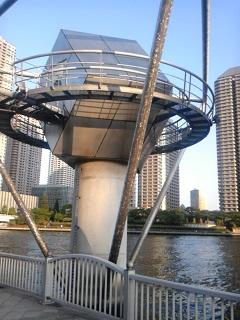 <<<<<<<<<<<< characteristic structure of the Rei Kishijima Teshio Station> >>>>>> <<<<<<<<<<<< characteristic structure of the Rei Kishijima Teshio Station> >>>>>>
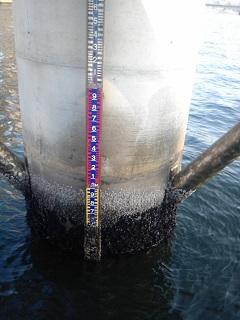 <<<<<<<<<<<<<<<>You can see the height of the normal tide. >>>>> <<<<<<<<<<<<<<<>You can see the height of the normal tide. >>>>>
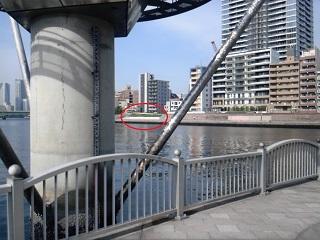
<<<<<<<<The place surrounded by red circles came out from here to the Sumida River. >>>>>
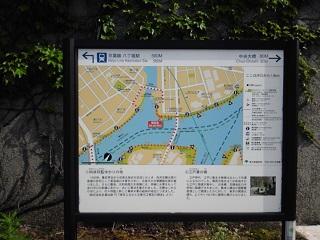 <<<<<<<<<<<The nearest station is Hatchobori >>>>>>> <<<<<<<<<<<The nearest station is Hatchobori >>>>>>>
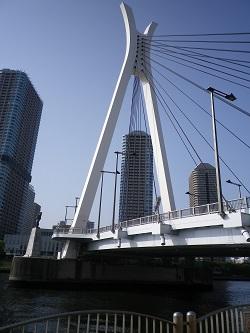
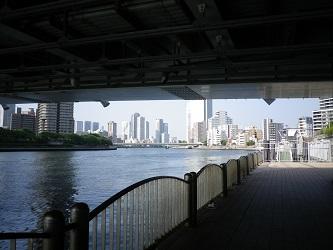 <<<<<<<<<> High-rise building near Kachidoki seen from under the Chuo-ohashi Bridge >>>>>>> <<<<<<<<<> High-rise building near Kachidoki seen from under the Chuo-ohashi Bridge >>>>>>>
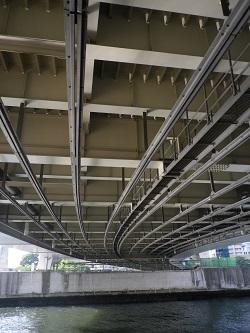 <<<<<<<<<<<<<<<<<<<<<<<<<<<<<<<><<<<<<<<<<<<<<<<<<<<<<<<<<<<<<<<<<<<>>>] >>>>>>> <<<<<<<<<<<<<<<<<<<<<<<<<<<<<<<><<<<<<<<<<<<<<<<<<<<<<<<<<<<<<<<<<<<>>>] >>>>>>>
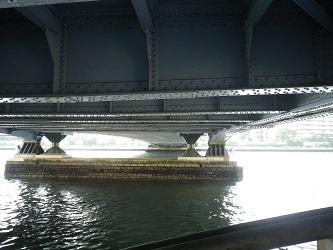 <<<<<<<<<<<<<<<< rivets under Eitai Bridge are used to feel the history. >>>>>>> <<<<<<<<<<<<<<<< rivets under Eitai Bridge are used to feel the history. >>>>>>>
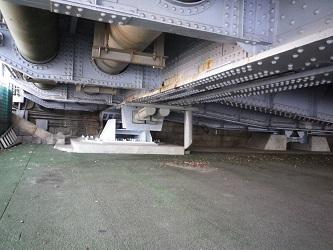 <<<<<<<<<<<<<<< earthquake-resistant construction under Eitai Bridge is being carried out.) >>>>>>> <<<<<<<<<<<<<<< earthquake-resistant construction under Eitai Bridge is being carried out.) >>>>>>>
[Sam]
May 22, 2017 16:00
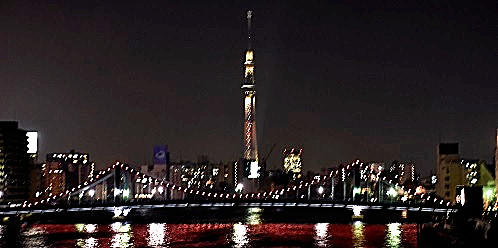
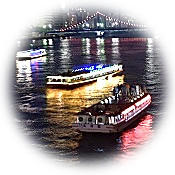 To celebrate its 5th anniversary on May 22, Tokyo Sky Tree celebrates its 5th anniversary, the new lighting "Nobori" will be lit on May 18 in addition to the two lightings of "Iki" and "Masa". To celebrate its 5th anniversary on May 22, Tokyo Sky Tree celebrates its 5th anniversary, the new lighting "Nobori" will be lit on May 18 in addition to the two lightings of "Iki" and "Masa".
"Nobori" has a theme color of tachibana (orange) inspired by the fruit of Tachibana, which has been regarded as an auspicious tree since ancient times, and is designed to show the appearance of three "nobori" in the night sky. The lower part of the heart pillar is decorated with bright tachibana (orange) with gradation.
The lights are turned off at 59 minutes every hour from the start of lighting, re-lit at 00 minutes, and at the time of lighting, the surfaces lit one by one in order to express the appearance of a large "nobori" being raised. Has been done.
In view of the lively and lively ukiyo-e paintings of festivals and events with the "Nobori" drawn, the message was "Enhance Tokyo as a whole by raising a large" Nobori "in the night sky of Tokyo." I hear it was named "Nobori".
The new lighting "Nobori" shines over Kiyosu Bridge, where the cable part is colored pink.
On this day, many houseboats came and went, and seemed to be enjoying the third lighting.
By the way, the "Nobori" is turned on for five days until the 22nd, and then the three types of "Iki", "Masa" and "Nobori" are turned on daily.
[Pampon]
May 5, 2017 09:00
Hello, it's Penpan.
GW has started! Would you like to go to one of them?
By the way, this time, I found a delicious shop, so I would like to introduce you.  Its name is WINE BARame. The place this time is 5-15, Nihonbashi-Hakozakicho, Chuo-ku.
I have a lot of my favorite BAR, but I also like ame.
The photo shows lunch, but the mochimochi gnocchi was very delicious.
It is a small shop with 16 seats, but the shop is friendly and warm, and it is a cozy space.
It might be good to make a reservation and use it for a small party.♫
We will continue to introduce delicious and fashionable shops in the future, so please look forward to it. 
[GPP]
May 3, 2017 09:00
 Under the theme of "Haiku," we will introduce Kikaku Enomoto (later Kikaku Takarai), a poet who gained popularity during the Edo period, and spots related to the corner. We hope that you will feel familiar with the phrases written by the corner, the time and city where the corner spent. Under the theme of "Haiku," we will introduce Kikaku Enomoto (later Kikaku Takarai), a poet who gained popularity during the Edo period, and spots related to the corner. We hope that you will feel familiar with the phrases written by the corner, the time and city where the corner spent.
 Also, I heard the news that a promotion council was established to make Haiku UNESCO Intangible Cultural Property. If approved, Haiku will get more attention. Also, I heard the news that a promotion council was established to make Haiku UNESCO Intangible Cultural Property. If approved, Haiku will get more attention.
1. The haiku poet, Kikaku
 There is a monument to the site of the corner residence in Kayabacho, Nihonbashi, Chuo-ku. There is a monument to the site of the corner residence in Kayabacho, Nihonbashi, Chuo-ku.
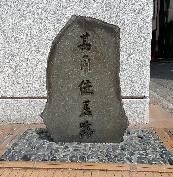  Monument, the ruins of the corner residence (Kayabacho, Chuo-ku) Monument, the ruins of the corner residence (Kayabacho, Chuo-ku)
 Matsuo Basho, a poet from the Edo period, established haikai in the literary arts. "Sokaku" is the disciple of Basho, which is counted as Shomonjittsu. Matsuo Basho, a poet from the Edo period, established haikai in the literary arts. "Sokaku" is the disciple of Basho, which is counted as Shomonjittsu.
 In contrast to Basho who wrote tranquility, the corner wrote many stylish phrases based on Edo. After Basho's death, the corner caused "Edoza" and gained even more popularity with a stylish phrase reflecting the Edo kid's temperament. In contrast to Basho who wrote tranquility, the corner wrote many stylish phrases based on Edo. After Basho's death, the corner caused "Edoza" and gained even more popularity with a stylish phrase reflecting the Edo kid's temperament.
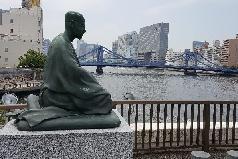  Basho Okina Statue and Historic Site Observation Garden (Tokiban, Koto-ku) Basho Okina Statue and Historic Site Observation Garden (Tokiban, Koto-ku)
 Now, let's take a look at the verse. In the following, both are phrases that describe Edo. (Please read the next page (continued) for the meaning of phrases and places related to them.) Now, let's take a look at the verse. In the following, both are phrases that describe Edo. (Please read the next page (continued) for the meaning of phrases and places related to them.)
 The sound and changing clothes in Echigo-ya The sound and changing clothes in Echigo-ya
 There is no day when a bell can't be sold. Spring in Edo There is no day when a bell can't be sold. Spring in Edo
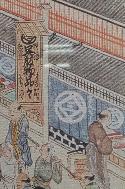  Hirodai Shoran (Echigoya kimono store) Hirodai Shoran (Echigoya kimono store)
More The sound and changing clothes in Echigo-ya
1
|
Links
|
 <<<<<<<< >>>>>
<<<<<<<< >>>>>
 To celebrate its 5th anniversary on May 22, Tokyo Sky Tree celebrates its 5th anniversary, the new lighting "Nobori" will be lit on May 18 in addition to the two lightings of "Iki" and "Masa".
To celebrate its 5th anniversary on May 22, Tokyo Sky Tree celebrates its 5th anniversary, the new lighting "Nobori" will be lit on May 18 in addition to the two lightings of "Iki" and "Masa".
